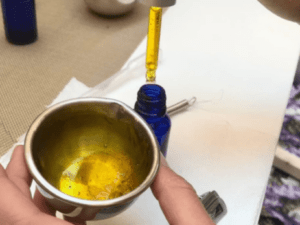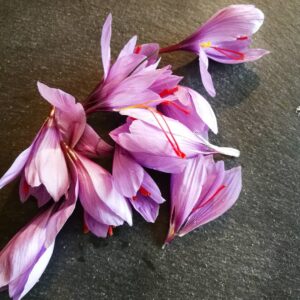
Saffron and aloe vera serum for a radiant skin
Saffron is not only a wonderful spice well known for its subtle and delicate taste in cooking, but it is also one of the elements
It is a flower of crocus sativus whose pistil, once dried, gives saffron 😍 The petals contain polyphenols, excellent antioxidants and are used in cosmetics
The benefits of saffron are numerous. It has been known since Antiquity as a remedy against many pains and diseases. Without claiming to be a universal medicine, it constitutes a natural solution to many current health problems. Thanks to its active ingredients and anti-oxidant properties, saffron is not only used in the pharmaceutical industry but also in cosmetics.
The four main biologically active compounds in saffron are crocin, crocetin, picrocrocin and safranal. Crocin and crocetin are carotenoids that give saffron its bright yellow-orange-red color. Picrocrocine is responsible for saffron’s slightly bitter flavor and taste. Finally, safranal is a volatile compound that gives saffron its particular aroma.
In ancient Egypt, the medicinal virtues of saffron are described in the Ebers papyrus (dating from 1550 BC). Saffron has its own hieroglyph and is quoted in many medical formulas. Saffron was also said to have aphrodisiac virtues. Thus, Cleopatra would have used saffron that she poured in her hot baths to benefit from its cosmetic and aphrodisiac properties.
Saffron not only helps fight free radicals, but also brings luminosity and radiance to the skin, hydration and strengthens the skin’s defenses. It is also a recognized anti-aging

Saffron is not only a wonderful spice well known for its subtle and delicate taste in cooking, but it is also one of the elements

Crocus sativus pistil (Saffron) is not only a wonderful spice known for its subtle and delicate taste in cooking, but it is also a magic